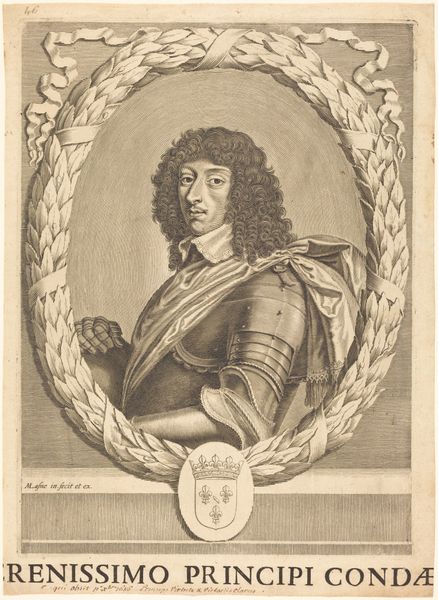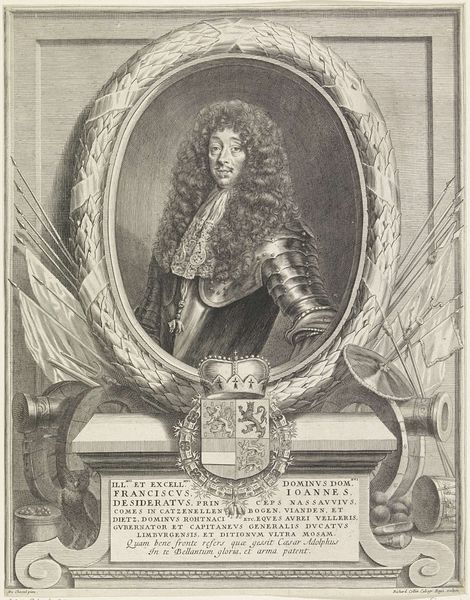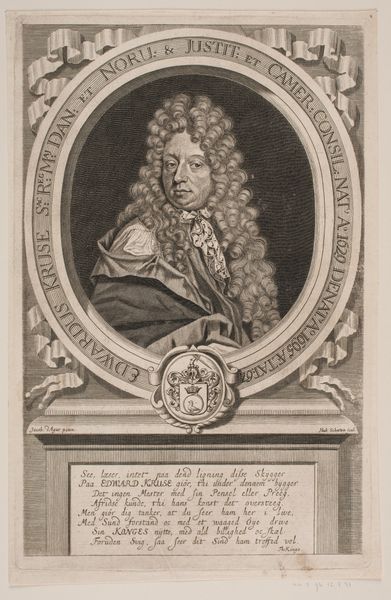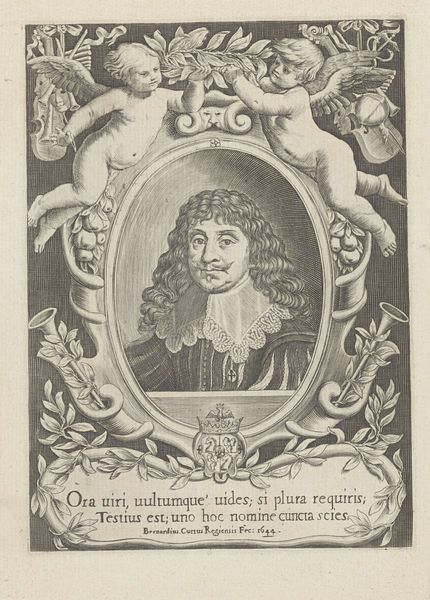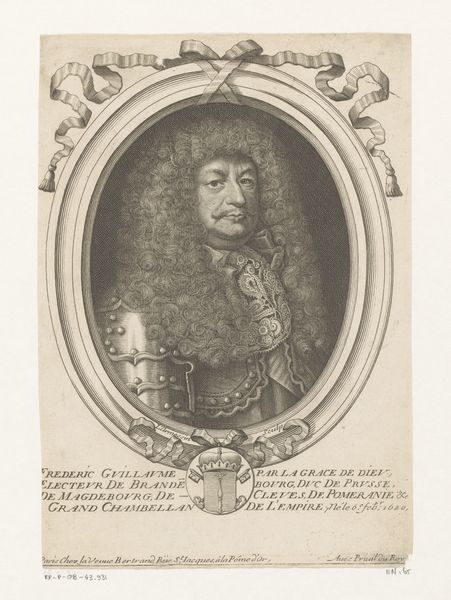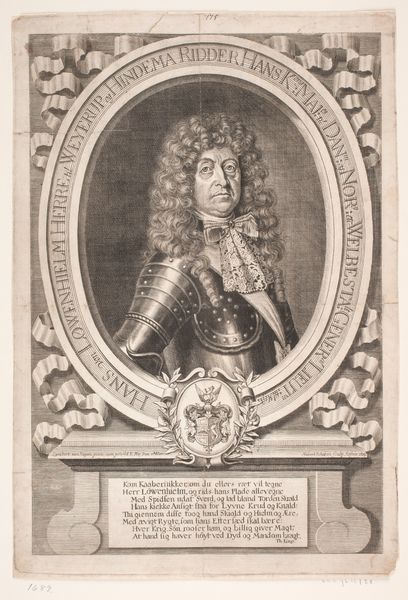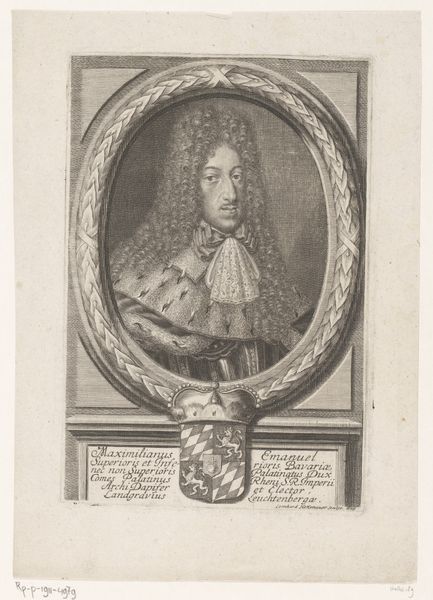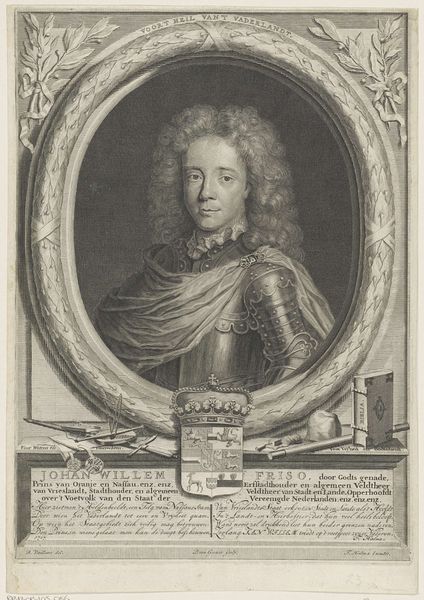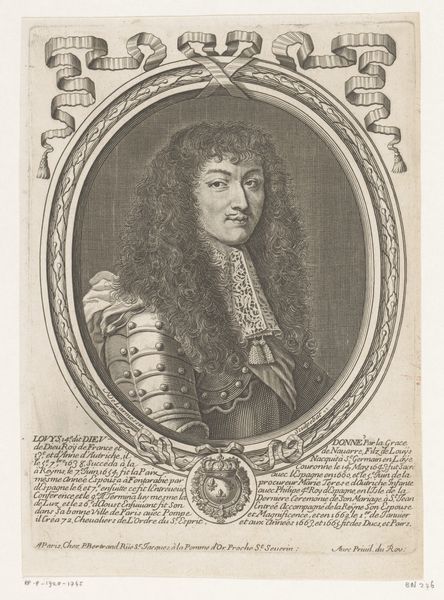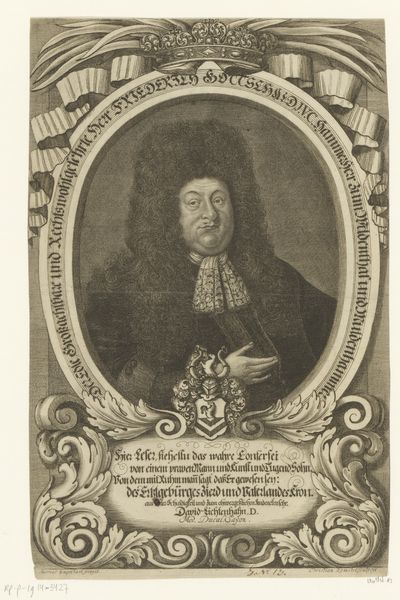
print, paper, ink, engraving
#
portrait
#
aged paper
#
baroque
# print
#
old engraving style
#
traditional media
#
paper
#
text
#
ink
#
history-painting
#
engraving
Dimensions: height 177 mm, width 134 mm
Copyright: Rijks Museum: Open Domain
This is Balthasar van Westerhout's 1699 engraving, "Portret van de jurist Johann Christoph Schambogen". The portrait commemorates Johann Christoph Schambogen, a doctor of law and professor at Prague's Ferdinand University. Consider the historical context: this was a period marked by rigid social hierarchies where one's position dictated their representation. Schambogen is depicted with symbols of status: his elaborate wig, his garments, and the book which indicates his profession and learning. The detailed inscription below the portrait lists his accomplishments and titles, reinforcing his importance within the academic and legal community. But, what does it mean to memorialize a man of law in this way? Is this image meant to preserve Schambogen's identity, or to project an ideal of status and authority? How does this image affirm power structures from the period? Perhaps it reflects a desire for lasting recognition in a world undergoing significant social and intellectual changes.
Comments
No comments
Be the first to comment and join the conversation on the ultimate creative platform.
